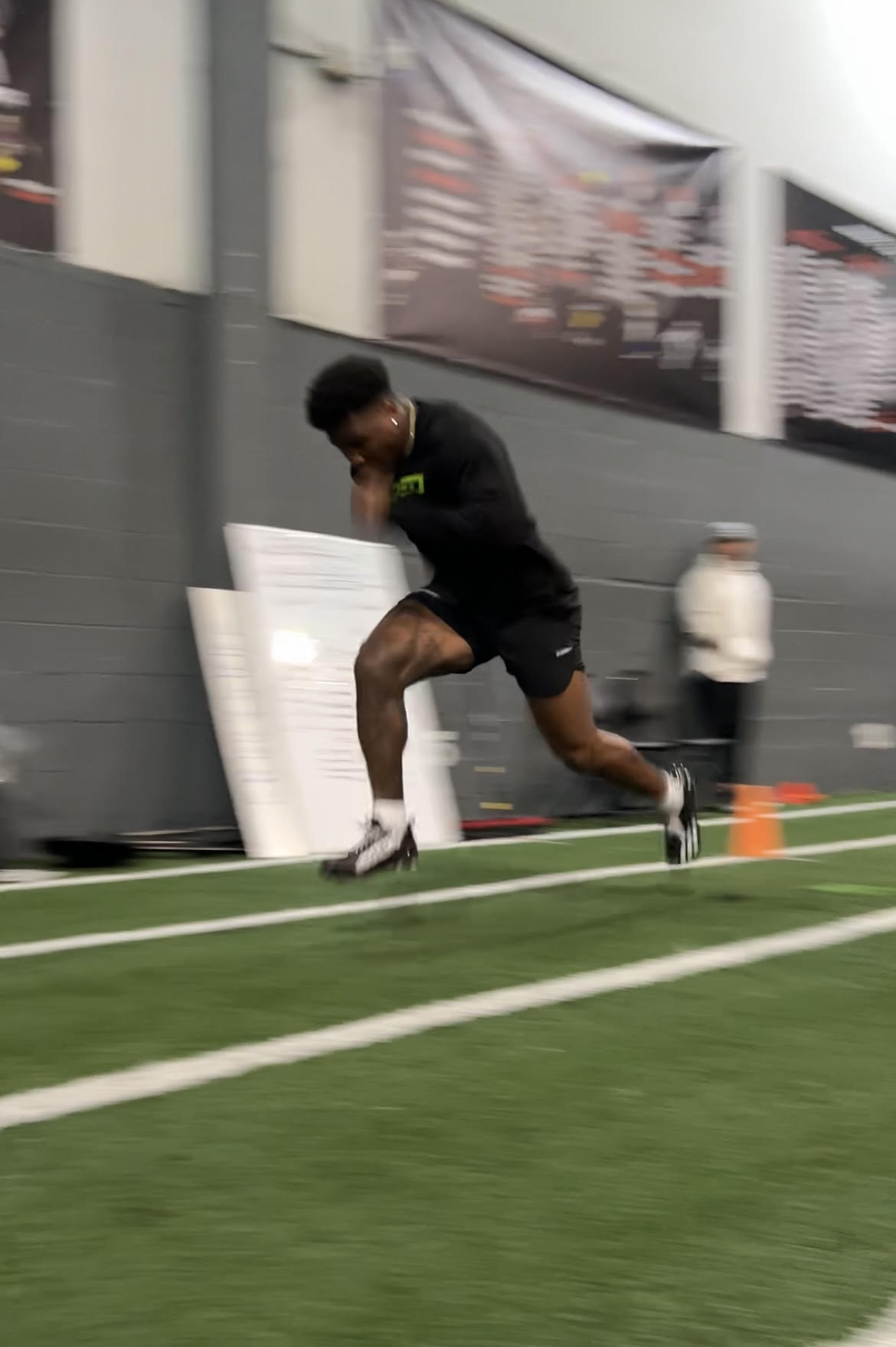And despite them being genetically elite, I found a correlation to youth athletes.
“I watched a bunch of guys who will run 4.2-4.5 at the NFL combine run sprints.
They were obviously fast.
But then I watched them lift..
And they were all strong. I mean STRONG.
Weak & Fast doesn’t exist. Ever.
Prioritize your training accordingly.”
-Ray Zingler on X
“Yeah, but Ray, those are elite athletes, what does this have to do with the average person?”
Totally fair question, however I’d turn around and ask you, “If you reduced 50% of their strength, would they still have world class speed?”
Would they still be relatively fast? Probably.
Would they harbor the type of world class speed that earns them a paycheck after running a 40-yard dash in Indianapolis? No chance.
There is a good chance they wouldn’t even make an NFL roster. (Many, even with elite speed, still won’t.)
So, what do you and I have in common with a world class athlete, if you were to take away 50% of his strength? We both wouldn’t be playing in the NFL. Talk about a fraternity!
The point I am making is this, whether it’s chicken or egg, strength feeds speed or speed feeds strength, high levels of either don’t exist without, at the very minimum, sufficient levels of the other.
And for most athletes (& parents) who likely desire to get faster more than they desire to get stronger, this becomes a massive problem.
Especially at the youth levels, where speed can really be trained.
All athletes need to do what athletes do, sprint, jump, cut, change directions, play sports, etc. as doing these things consistently will undoubtedly improve athleticism, but often where the biggest bump in performance will come from is increasing strength levels.
The reason is because while they likely, by 14 years old, have a base of playing sport in some (often large) capacity, many young teens lack relative strength.
By 14 they may have a sporting age of 9 (if they’d been playing sports since they were 5) but a training age of 0 (meaning 0 years spent performing REAL strength training).
If we continue to increase their sporting age, but their (strength) training age stays negligent, we will eventually see a MASSIVE flat line (often a regression) in sport performance and especially output potential.
But, if we increase their (strength) training age, and their relative strength levels increase, that proverbial gas can then be poured onto their athletic performance fire.
In summary, to go fast, you have to have the strength to be able to do so.
Lift weights. Run hard sprints.
It works.



